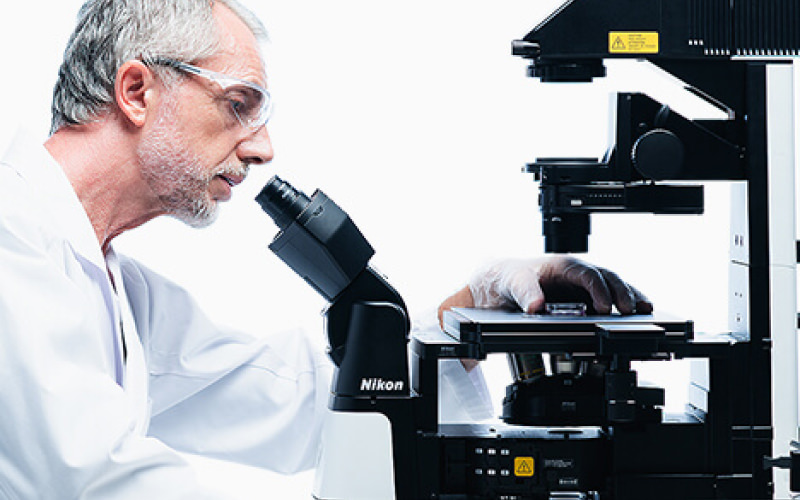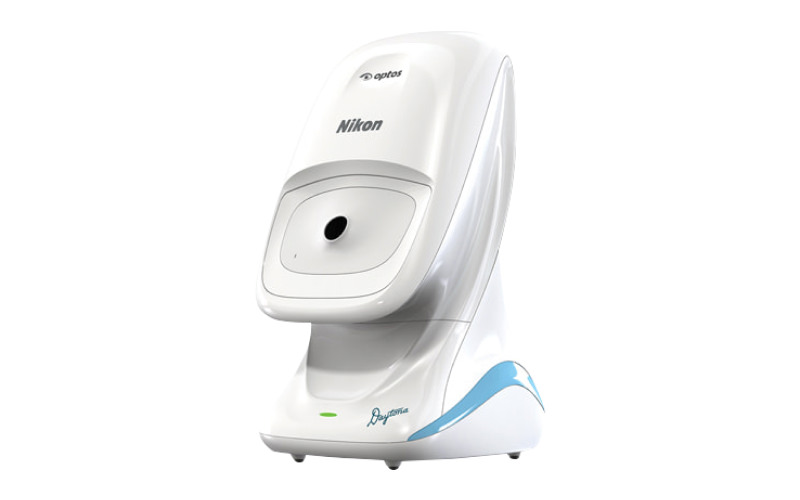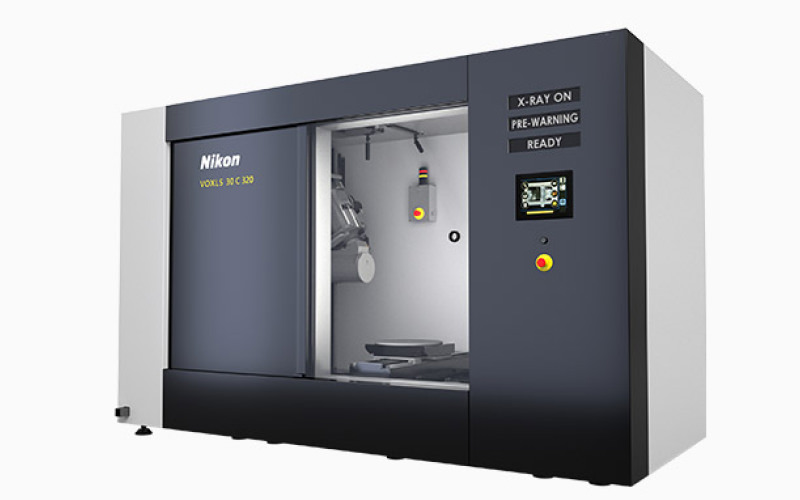Noise Reduction
Technology Overview
By reducing signals that are not targeted in images, the subject can be clearly reproduced in a photograph, and precise information can be extracted from the image.
The appearance of noise has its own characteristics depending on the cause of the noise generation, and reduction processing appropriate to the cause is required. Noise can be generated from the pixels and circuits of sensors, or from the digitization of signals obtained from sensors and image compression. If these effects are noticeable compared to the desired signal, a filter tailored to the characteristics of the noise is applied. For example,by applying a spatial filter such as a median filter, that smooths the signals of surrounding pixels at the pixel of interest, noise signals that occur specifically in one pixel are alleviated.
Click to enlarge
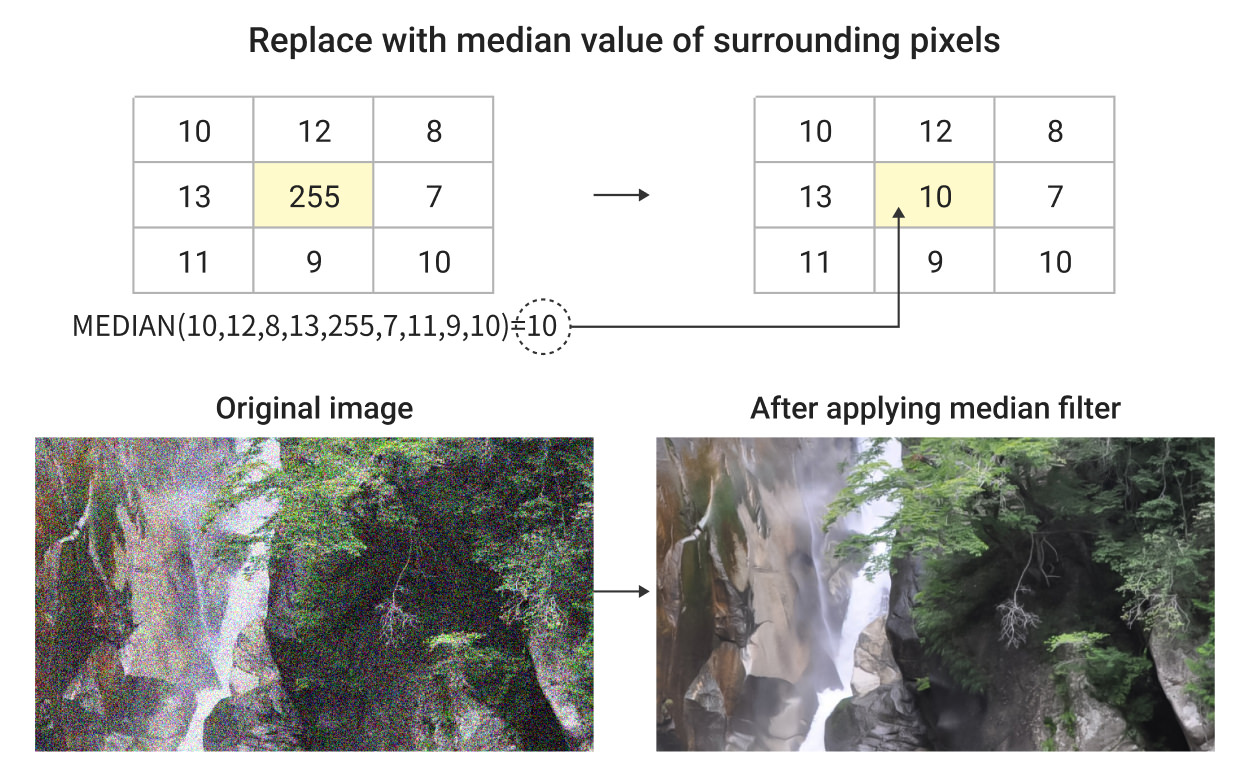
Photographic images are taken under various conditions, and those captured in very dark environments will have weak signals and noticeable noise. It is necessary to efficiently reduce noise while preserving the signal. If the boundaries of cells in a microscopic image are to be extracted, it is essential to apply a filter that reduces noise while preserving the boundaries. Another method of noise reduction, aside from filters, is to use machine learning to capture and remove the characteristics of the noise. Image processing used in devices such as inspection equipment also requires the ability to distinguish subjects from noise defects.
Technology Application Examples
Camera Z6III
Z6III has excellent high-sensitivity performance, allowing you to take beautiful pictures in low-light conditions. It achieves a maximum standard imaging sensitivity of ISO 64000 for still images and ISO 51200 for videos. The image-processing engine, EXPEED 7, performs noise processing with different intensities for detailed areas such as and flat areas like the night sky, effectively the rough noise that tends to occur in the night sky while maintaining high resolution of the details. This makes shooting in dimly lit scenes, such as at or indoors, even more enjoyable.
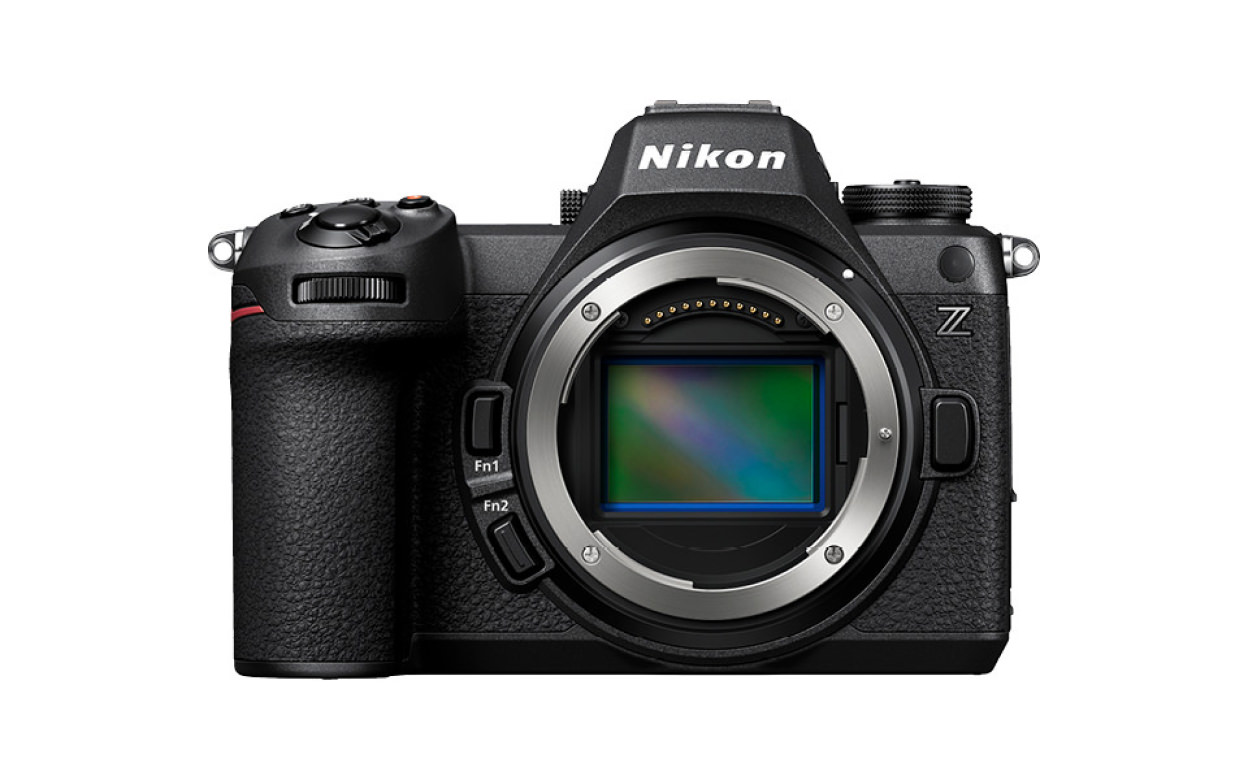
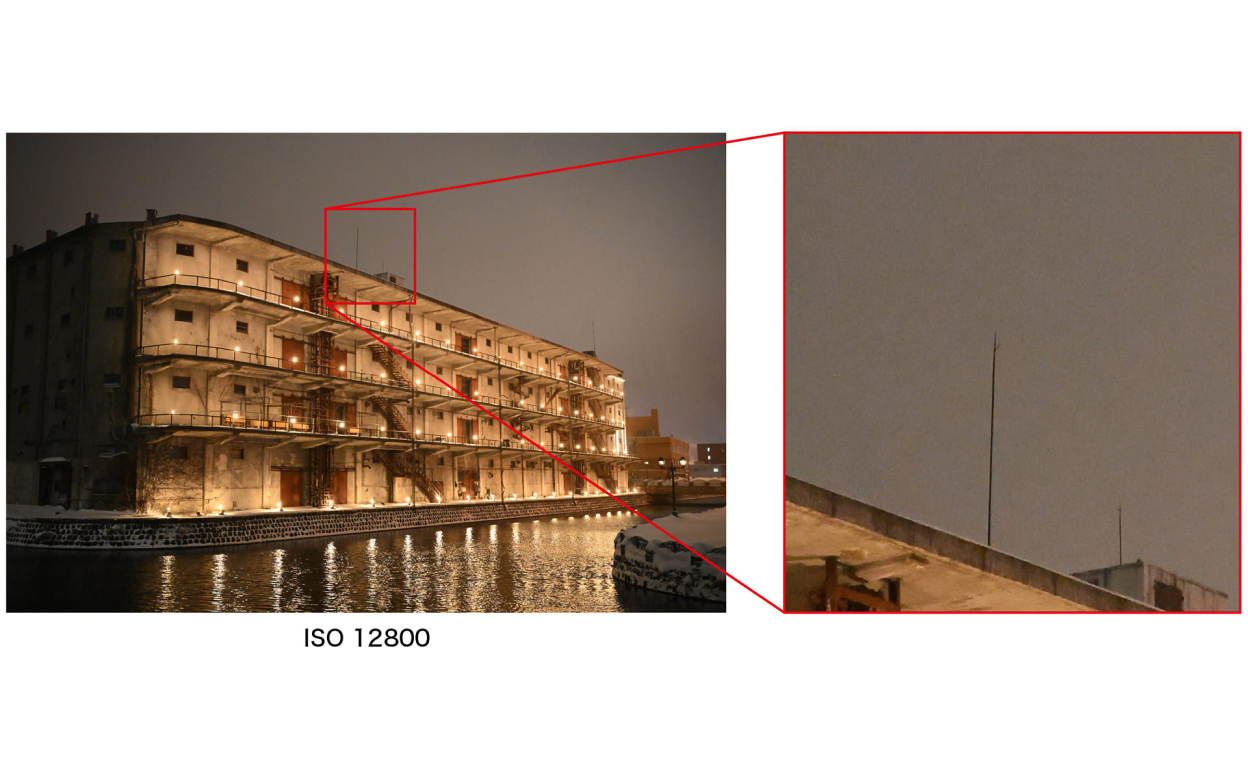
Technologies related to these examples
Related Technology
Image Quality Enhancement
The evaluation of image quality depends on the viewer's subjective opinion, so image processing is performed to allow users to see what they want. Digital camera images are generally processed to provide the desired results, including noise reduction, high resolution, color correction, and sharpness.
Professional cameras must not only meet the level of image quality required by photographers, but also allow them to express images in the way they want, such as through sharpness or continuous blur under various shooting conditions.
Click to enlarge

Main Related Products
You can search for articles related to Nikon’s technology, research and development by tag.

